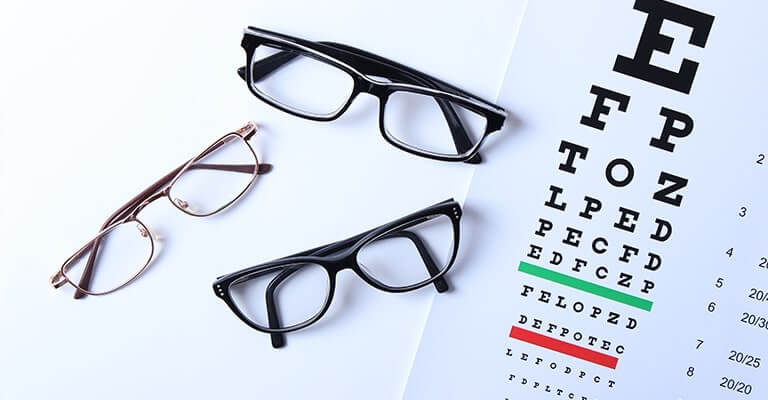

Determining and checking diopters
If you have noticed that your vision is not as sharp as it used to be, you should visit an ophthalmologist to determine your visual acuity. This test primarily assesses how well you currently see. After that, the determination of diopters follows if necessary.
Refraction tests help the doctor determine your diopter and whether you need glasses or contact lenses to improve your visual acuity.
Often, refractive errors can affect your vision. Refractive errors prevent light from properly bending as it enters your eye.
What are the types of refractive errors?
Astigmatism affects vision at all distances. It occurs when the cornea or lens of the eye has an irregular shape, preventing light from properly bending.
Hyperopia occurs when the eyeball is too short, causing light to focus behind the retina instead of on it.
Myopia occurs when the eyeball is too long, causing light to focus in front of the retina instead of on it.
Presbyopia affects near vision. It typically occurs around the age of 45 due to the weakening of the ciliary muscle, which affects its ability to focus on nearby objects.
What can you expect during the examination?
During the refraction test, the doctor will assess your visual acuity and determine the best refractive correction for your glasses or contact lenses.





